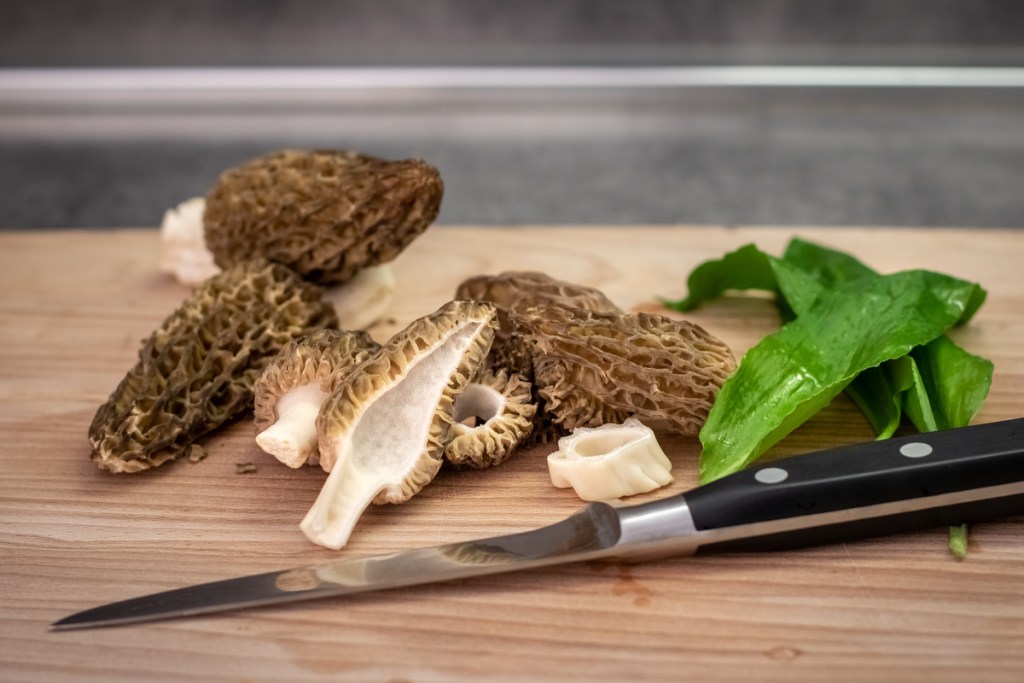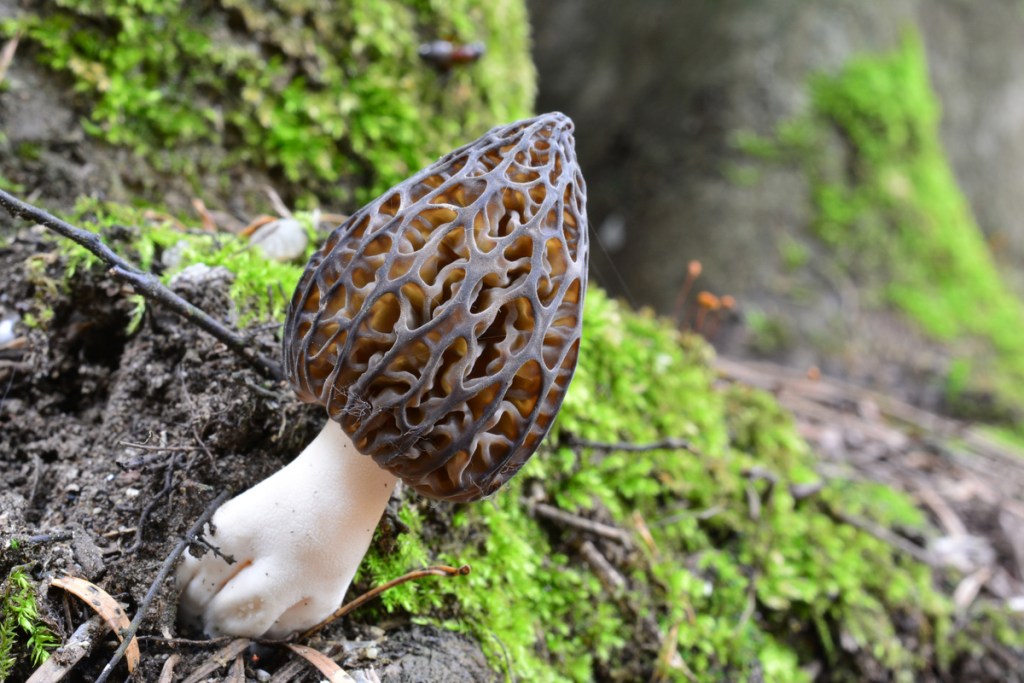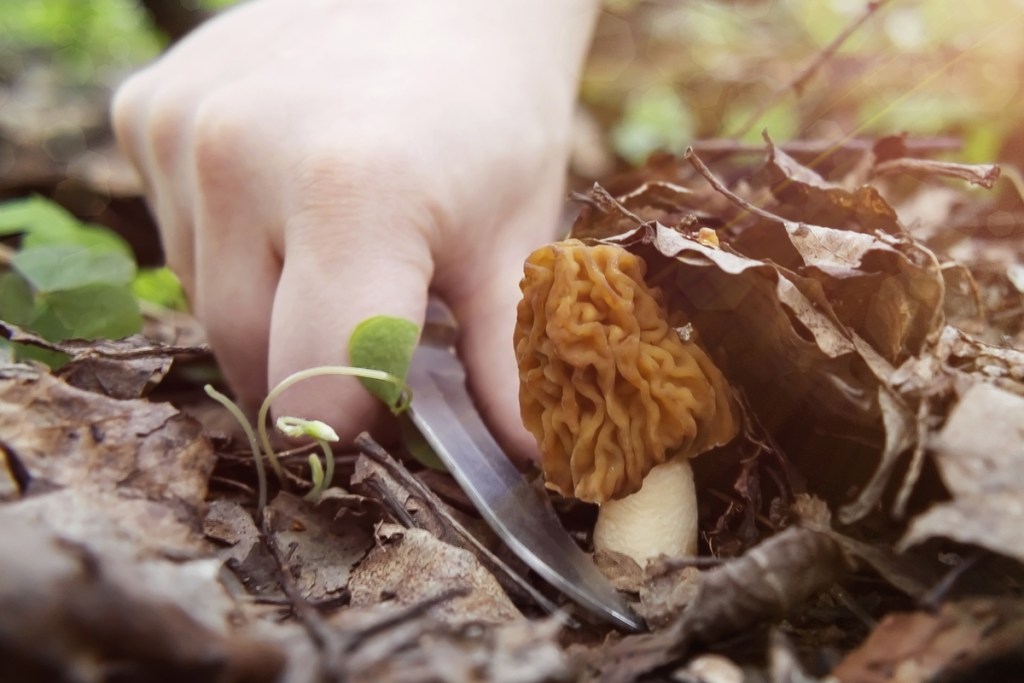If you’ve grown a few different types of mushrooms before and are looking to branch out into more challenging gardening projects then you might be interested in how to grow morel mushrooms. These mushrooms have a reputation for being expensive, difficult to find, and delicious. If you’ve never had one, you may be left wondering what makes them so special. Not to worry, we’re here to explain everything. We’ll clue you in on why morels are so sought after, what makes growing them different from growing vegetables, and even how you can start to grow your own.

What are morel mushrooms?
Morel mushrooms, or Morchella, are a species of edible mushroom with caps that resemble honeycombs. They’re prized for their rich, earthy taste, but also because they’re rather difficult to come by. Morels are an unreliable crop, so they aren’t farmed on a large scale like other mushrooms. This means that they need to be found in the wild, a difficult task in and of itself since morels blend into the forest so well. Depending on the exact variety and how far they’re being shipped, morels can cost anywhere from $30 a pound to several hundred dollars.
Naturally, if you’re a fan of morels, you’ll want to skip that price tag by growing or foraging for your own. If you forage for them, be aware that morels have a poisonous look-alike mushroom, called false morels. False morels can look very similar to true morels, but are typically more red in color.
A reliable way to tell the difference is to cut the mushroom in half. True morels are hollow inside, while false morels are solid. It’s a good idea to go mushroom hunting with an experienced guide, especially the first few times you go foraging. If you have any doubts about what kind of mushroom you have, don’t eat it. No mushroom, no matter how delicious, is worth your life. If you suspect you’ve eaten the wrong kind of mushroom, seek medical help immediately.

Why are morel mushrooms so difficult to grow?
If morels are so unreliable to grow, though, you may be wondering if it’s even possible to farm them yourself. The answer is yes, sometimes. Morels are fickle mushrooms, and it’s possible to do everything right and still not see results the first time you try. However, there are plenty of gardeners who see success, even if it sometimes takes multiple tries.
Part of the difficulty in growing them is that morels won’t grow indoors like many other mushrooms will. This gives the gardener less control over the growing conditions, which, when combined with the picky nature of morels, means there is a lower success rate. You can raise your chances somewhat with a grow kit, but it’s helpful to go into this with the understanding that farming morels is a long-term process that is partially out of your control. Don’t get discouraged if it doesn’t work the first time, keep at it!

Starting your morel mushrooms
Start by getting morel mushroom spores or spawn. You can use a grow kit for this, order them online or at a specialty store, or harvest your own spores from a foraged morel. The most reliable way to harvest spores from a morel is to boil water with a tablespoon of molasses and a quarter teaspoon of salt. After the water has boiled and cooled down, add in shredded or chopped morel pieces.
You need at least one full morel, but you can add more for a greater chance of getting spores. Let the water sit for two days, then strain it through cheesecloth to remove the mushroom chunks. The water should have plenty of spores, and can be poured directly onto the planting site once it’s ready.
After adding your spores, lay a thin layer, only about a quarter inch, of compost over it. If conditions are right, and you’re lucky, you can see mushroom growth in a matter of days. Morels grow very quickly, so keep a close eye on your planting area. Once they begin to show, give them another day or two to grow and mature. You can leave them longer, but keep in mind that they’re outdoors, with the elements and animals. The longer you leave them to grow, the more you risk damaged mushrooms. Harvest them by snapping or cutting them off at the base. Don’t pull them up, as this can damage the mycelium network the mushrooms grow from.

What morels need in a planting site
Morels grow on the forest floor, typically among deciduous trees. To increase your chances of success, try to mimic these conditions as best you can. They need filtered, patchy sunlight to grow best. If you have a deciduous tree or trees in your yard, you might try planting the morels under them. Morels also need loamy soil, preferably with decaying wood in it, and consistent moisture with cool temperatures. You can add compost, especially composted wood, or wood ash to the soil before planting your morels. Spring is the typical growing season for morels, as it is mild and wet, but in hotter climates you might have better results in late fall.
Morels are difficult to grow, but they aren’t impossible. Following these tips can help increase your chances, but the most important thing is to keep at it! Your harvests may be small at first, but, by repeating the process over time, you can eventually establish a thriving colony of morel mushrooms in your own yard. Enjoy the rich taste of morels, without the steep price tag.
Editors' Recommendations
- The best little flowers to grow when you’re low on space – plant these this spring
- Have a gross mealybug infestation on your plants? Try one of these remedies
- These plants should be among the first you plant this year
- Have you ever wondered if potatoes are fruits or vegetables? We have answers
- Gardening 101: 7 easy seeds to grow in cups for a tiny, adorable, and low-maintenance indoor garden




